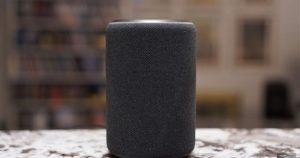In the ongoing war for control of the digital space that is the modern car, Google just conquered a major swath of territory. This week, it and General Motors announced that the tech giant’s Android operating system will underpin the infotainment systems in GM’s cars, starting with some model year 2022 vehicles.
For future Chevy, Cadillac, Buick, and GMC drivers, that means built-in access to Google Maps and the ability to use Google Assistant to make calls, send texts, tune the radio, and more, without plugging in their phones. For GM, it’s an admission that people don’t want its house-made infotainment tech, and to give them what they do want. For Google, it’s more direct access to more consumers—GM accounts for 17 percent of new car sales in the US—in the rare place where they’re not supposed to have their phone in their hand.
In recent years, Google, Apple, Amazon, and Microsoft have all tried to move into cars. It’s not a zero-sum game, and many automakers have worked with more than one tech company to connect their vehicles. Microsoft has partnered with car makers including Ford, Kia, and Hyundai to co-develop infotainment systems. Amazon is working with Audi, Toyota, Ford, and others to include Alexa into dozens of models, and its aftermarket Echo Auto does the same for older rides.
Stay in the know with our Transportation newsletter. Sign up here!
Android Auto and Apple Carplay, which let drivers project their phone’s interface onto the center screen, are each available in more than 400 car models globally; many offer both systems. Even with this new Google deal, GM will continue to offer Apple Carplay in its cars. But the goal of the collaboration is to offer a more compelling way to stay connected while behind the wheel.
GM’s new interface will integrate the Android operating system into the car, as opposed to Android Auto, which just projects a phone’s interface onto the center screen.
Photograph: General Motors“Many of our customers prefer the embedded technology experience in the car,” says Yasser Mirza, the senior product manager of GM’s connected commerce platform. “And they expect it to connect with what’s in their hand.” Android Auto and Apple Carplay offer that connection, but with limitations. Android Auto essentially runs Android alongside whatever system is built into the car. If you want to switch from a podcast to the car’s radio, you have to toggle between the two interfaces. They display apps like Google Maps on the center screen, but not the screen over the steering wheel or head up display, where navigation commands are easier to see without looking away from the road. (“That’s one area where we can get better,” says Haris Ramic, the product lead for Android Automotive.) In many models, pressing the voice command button on the steering wheel activates the car’s native voice recognition system, not Google’s or Apple’s.
The new GM-Google partnership will take the offerings of Android Auto deeper inside the vehicle. The companies will jointly develop what Ramic calls a “blended” version of their creations. That means no more switching between systems. Drivers might even be able to use Google’s voice assistant to control things like the heating and cooling, though Ramic and Mirza declined to offer specifics, saying development is just starting. It’s a good bet, though, that GM’s software will retain control over any system that affects how the car drives. Ramic and Mirza demurred when asked about agreements their companies have made with regard to user data, but Google surely values the chance to gather more data on how its users move through the world.
Potential privacy issues aside, consumers are unlikely to mourn automaker-created infotainment. These systems are often hard to use, clunky, and outdated as soon as they hit the road—a product of the slow automotive development cycle. That’s a longstanding problem. “In-car electronics generated more problems from 2013 models than any other problem area,” Consumer Reports noted in 2013. It’s also an ongoing one: Infotainment systems were a key factor in this year’s JD Power Initial Quality Survey, punishing brands like Land Rover and Jaguar.
Polestar, Volvo’s electric performance brand, has a similar deal with Google, and uses an Android-based infotainment system in the Polestar 2.
Photograph: PolestarThat’s largely because automakers don’t have the depth of software talent found at companies like Google and Apple. A good infotainment system requires a range of expertise, says McKinsey auto industry analyst Hans-Werner Kaas. Engineers who can do everything from UX design to software that understands spoken commands are in short supply. So it makes sense for automakers to strike deals with the companies who can do it well, and give their customers what they want. “It’s becoming table stakes that you offer a seamless integration” with the smartphone, Kaas says. So it’s no wonder that Volvo and Audi have also welcomed Android into their vehicles, and Volvo’s electric performance-focused Polestar brand recently debuted its first vehicle running the Android-based system, the Polestar 2.
For Google, locking its system into GM’s sizable chunk of the American market is a coup over rival Apple. (A spokesperson for Apple did not reply to questions about the company’s future in-car plans.) And there will be plenty of fighting left, Kaas says. “We are in the first 20 minutes of a 90-minute soccer game.”
WIRED Theme Week: How We Learn
- This galactic primer is the future of AR education
- Become a musician using apps and a light-up piano
- Free coding school! (But you’ll pay for it later)
- Computer scientists really need to take ethics classes
- Ask the Know-It-Alls: How do machines learn
- 👁 Facial recognition is suddenly everywhere. Should you worry? Plus, read the latest news on artificial intelligence
- 💻 Upgrade your work game with our Gear team’s favorite laptops, keyboards, typing alternatives, and noise-canceling headphones



